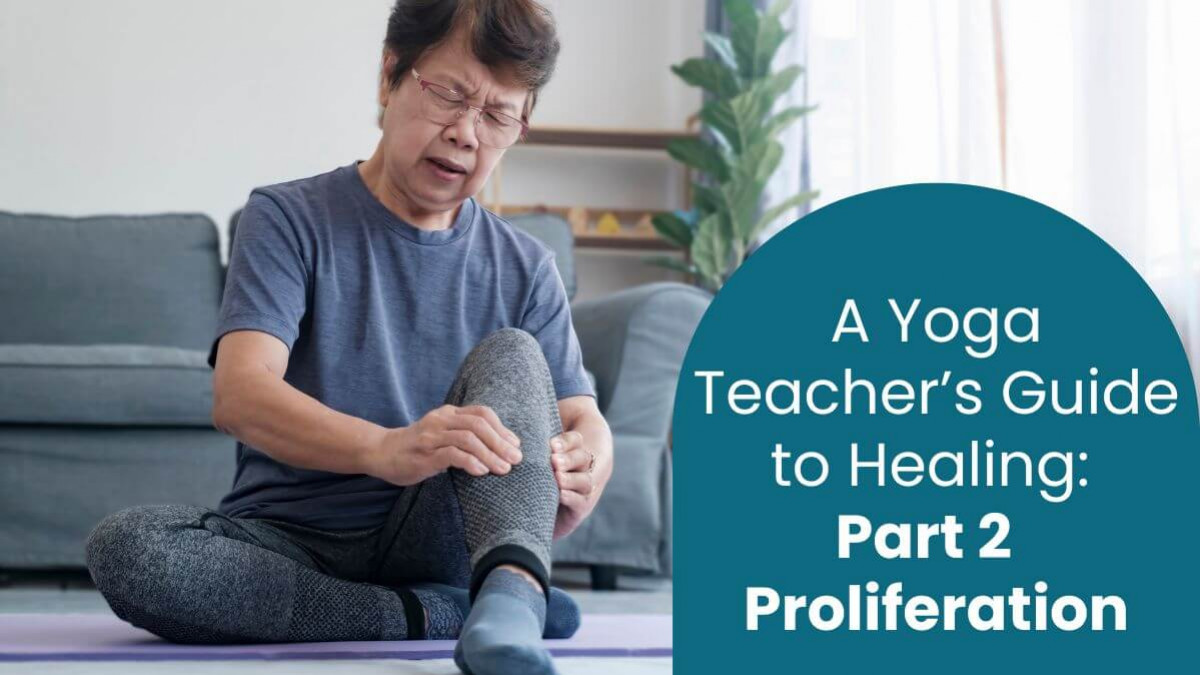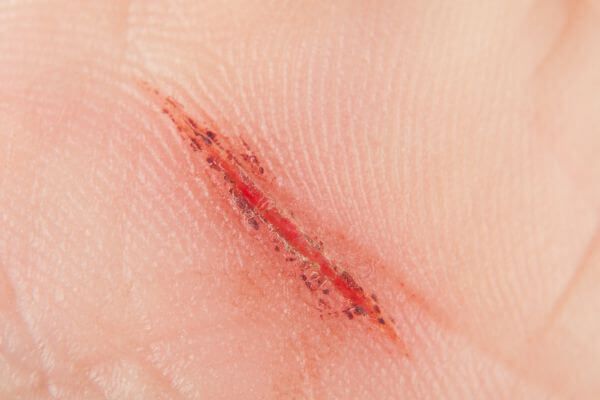A Yoga Teacher's Guide to Healing: Part 2 - Proliferation

Proliferation: How it Impacts Healing in Yoga
.
The Proliferation Phase of as It Relates to Tissue Healing in Yoga
.
Welcome back to the Yoga Teacher's Three Part Guide to Healing!
.
In this second article, we again dive into the world of tissue healing in yoga and how it impacts the practice. We specifically look into the proliferation phase. Understanding this phase is a sure way to improve your ability to help your students who are the path of healing as they come to yoga.
.
If you're a yoga teacher and you read the first part of this guide, you know that you teach people with injuries. It's just a part of the gig, and that's ok! You can be ready to support them and make a big impact on their healing process.
.
As a review, there are three stages of healing.
2. Proliferation Phase
3. Remodeling Phase
.
Understanding the Proliferation Phase:
.
Proliferation is like the body's construction team arriving at the healing site after the initial emergency response of inflammation. It's where the real action begins. But what exactly happens during this phase? Let's break it down.
.
The Proliferation Stage acts as the "construction phase" of the healing process, where the focus is on building a long-lasting, robust foundation.
.

.
Fibroblasts:
Before construction can begin, a construction team needs to be identified. In the case of healing tissue, fibroblasts are the body's skilled builders. Fibroblasts are dynamic cells, responding to signals from the surrounding environment to adjust their activities based on the specific needs of the tissue at any given time. These specialized cells actively produce collagen, particularly collagen type I, which forms the foundation of new tissue. Fibroblasts also participate in tissue repair and remodeling.
.
Granulation Tissue:
Granulation tissue, which includes blood vessels collagen fibers, forms during the Proliferation Stage. Granulation tissue is characterized by its pinkish appearance. Its primary function is to bridge the gap between the initial inflammation phase, where damaged tissue is cleared and inflammation is managed, and the remodeling phase, where the tissue matures and becomes more organized. It's akin to the bricks and mortar for the body's restoration project.
.

.
Let's take a deeper dive into the Collagen Production!
.
The fibroblasts work tirelessly to create collagen, which serves as the essential scaffold for new tissue. In essence, it's the foundation of the body's healing project.
.

.
.
In the Proliferation Stage, the fibroblasts work diligently to create a matrix of stronger, more substantial collagen fibers that reinforce the healing tissue. At this stage, collagen tupe 1 fibers are primarily laid down. Collagen type I provides superior tensile strength, stability, and resilience compared to collagen type III. This collagen matrix is critical for the tissue to regain its strength and functionality for the long term.
.
To put it simply, the Inflammation Stage initiates the healing process by laying down some temporary collagen type III fibers, which can be likened to a band-aid. The Proliferation Stage follows, focusing on crafting a more resilient collagen type I matrix that's akin to the actual "construction" of the healing site. The transition from collagen type III to collagen type I is an essential step in achieving a full recovery and returning the tissue to its optimal function.
.
Blood Vessels and Angiogenesis:
Tiny new blood vessels, known as capillaries form through the process of Angiogenesis.
Angiogenesis, a key player in the Proliferation Phase of healing, is like nature's way of creating new highways. During this stage, the body generates new blood vessels, allowing a fresh flow of nutrients and oxygen to reach the healing site. It's the construction of a vital supply network, ensuring that the healing process has all the necessary resources to proceed smoothly. This increased blood flow supports tissue regeneration, helping to form a sturdy and resilient foundation for full recovery.
.

.
Closing the Wound and Scar Tissue:
During the proliferation stage, cells divide and therefore reproduce which is essential for new tissue development. A key part of healing is Wound Contraction. In this process, the fibroblasts pull the edges of a wound closer together. This reduces the wound's size and prepares it for eventual closure. Next comes Scar Formation. While scar tissue begins to form during the Proliferation Stage, it will continue to evolve during the subsequent Remodeling Phase (The 3rd stage of tissue healing in yoga), gradually maturing and becoming less prominent over time.
.

.
In summary, the Proliferation Stage involves the resolution of inflammation, the active participation of fibroblasts in collagen production and wound contraction, the formation of granulation tissue, angiogenesis for increased blood flow, and robust cell proliferation. Together, these processes lay the groundwork for more mature and functional tissue in the final stages of the healing process.
.

.
As a yoga teacher, it's important to safely and effectively ensure students practice yoga in a way that supports the healing journey. The healing process shows us just how adaptable the body is. In essence, the body heals so it can do what the body wants to do.
In order to heal and be able to respond to movement and pressure again, movement and pressure are required facilitate the proliferation stage. That's good news! That means a mindful movement practice such as yoga asana can be just the right thing to help the body heal. But here's the thing. Too much movement or pressure can disrupt the healing process. Remember, the collagen matrix is still mostly type 3 and is like scaffolding. While scaffolding can support the construction workers, it's not built to sustain a storm. Too much movement and pressure may cause a breakdown of the temporary collagen matrix. If this happens, it's back to stage 1 - the inflammation stage.
.
If you teach yoga and want to better understand the stages of healing and have the best knowledge to avoid setting your students back to the inflammation stage, then you'll want to invest in the "Teach Yoga To Students with Injuries" course.
.


Understanding the Proliferation Phase empowers us, yoga teachers, to guide our students with precision, helping them build strength, stability, and confidence as they recover. We're the architects of their path to well-being, ensuring it's rock-solid. Stay tuned for the grand finale, our third blog that unveils the mysteries of the Remodeling Phase, and don't forget to check out the, "Teach Yoga to Students With Injuries" course.
Categories: : Effective Teaching Techniques, Injuries & Yoga, Yoga Anatomy
 Trish Corley
Trish Corley 
